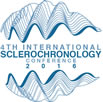

Dr David P Gillikin (home)
Sclerochronology
The term sclerochronology was first applied to a radiographic study on corals by Buddemier et al. (1974, p. 196) and, more formally, by Hudson et al. (1976) in their paper on corals entitled “Sclerochronology: a tool for interpreting past environments”. However, more recently at the 1st International Sclerochronology Conference, Jones et al. (2007) define sclerochronology as:
| “the study of physical and chemical variations in the accretionary hard tissues of organisms, and the temporal context in which they formed. Sclerochronology focuses primarily upon growth patterns reflecting annual, monthly, fortnightly, tidal, daily, and sub-daily increments of time entrained by a host of environmental and astronomical pacemakers. Familiar examples include daily banding in reef coral skeletons or annualgrowth rings in mollusk shells. Sclerochronology is analogous to dendrochronology, the study of annual rings in trees, and equally seeks to deduce organismal life history traits as well as to reconstruct records of environmental and climatic change through space and time”. |
Many authors differentiate sclerochronological studies and geochemical studies; for example, Williams et al. (1982) state that they used “coordinated isotopic and sclerochronological (growth increment) studies”, and Schöne et al. (2007) entitled their paper “Combined sclerochronologic and oxygen isotope analysis of gastropod shells …”. Therefore, in line with the differentiation already used by dendrochronologists to separate studies of tree ring width increments (dendrochronology) from isotopic or chemical analyses across rings (dendrochemistry; e.g. Smith and Shortle 1996; Verheyden et al. 2005; Poussart et al. 2006), we propose to use sclerochronology for studies of the physical structure of the hard tissues of organisms, even when combined with geochemistry (e.g. growth-line periodicity), and that sclerochemistry, as a sub-discipline of sclerochronology, be used to describe solely geochemical (isotopic or elemental) studies of the hard tissues of organisms.
text from Gröcke and Gillikin (2008)
Scleochronology resources: Discussion list server - 4th International Sclerochronology Conference (June 2016)

Contact Information |
|
David P. Gillikin, Ph.D. phone: 518-388-6679 |